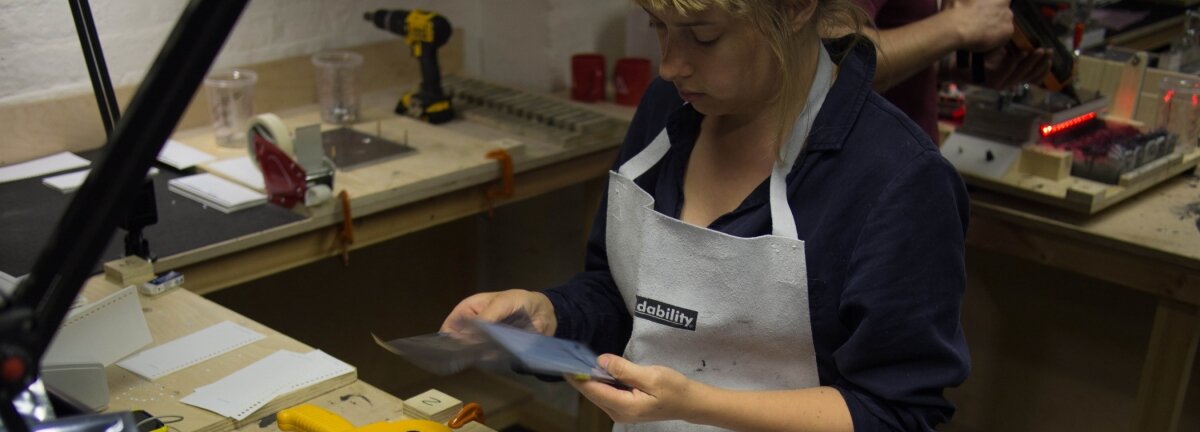The top 5 most disruptive hardware trends

As the finalists on our Spark product innovation fund enter the programme’s final weeks, we ask Andy Hutt, Ursula Davies and Tom Tobia of Makerversity - a pioneering community of emerging maker businesses - to tell us what they consider to be the top 5 disruptive trends in hardware.
Hardware is undoubtedly having a moment. Recent years have seen a burgeoning buzz about hardware being the next big thing in tech and growing interest from the investment and accelerator community.
But what does it really mean? If often feels as though hardware is a rather unsexy, techy catch-all term that’s used to describe everything from the Apple Watch to your home thermostat. The tech media might seek to cast hardware as the new software but the reality is much more nuanced than that.
So for a different take on the standard hardware fare, we’ve picked 5 of the most disruptive and interesting trends that we see at Makerversity, which we think are shaping the hardware scene for the better:
1. Making the tools as well as the product
British designer Roland Ellis has just built an entire manufacturing process from start to finish, delivering a batch of 1,000 reusable hardware interfaces for the launch of a new website. To us this is massively disruptive in many ways - he’s avoided all the fulfilment/shipping issues that often arise when designing for manufacturing, it’s sustainable and resource efficient, it’s dynamic, customisable and, in turn, he’s created something that no one else can. By tapping into the diverse creative skills of the team around him, he was able to deliver such an exciting project.
2. Small is beautiful
What we really should say here is: “the capacity for highly differentiated, locally manufactured products based on location and/or specialist user groups is beautiful”, but it’s not as catchy. Does a product need to sell millions to be a success? In fact, if a product is designed to sell millions can it really be the best option for every consumer, or the least worst option for a huge consumer group?
With digital manufacturing comes local manufacturing capabilities and with local manufacturing comes an opportunity to design and make products for highly differentiated users, groups and communities.
Mayku, both Makerversity members and Spark participants, are creating tools that allow businesses low on people and space to manufacture for a local market at the same time as sharing products and processes on a global platform.
3. Wearables with meaning
Not enough people seem to be asking ‘why’ with wearables. The Apple Watch is at the apex of solving a problem that doesn’t exist. That’s not to say there aren’t huge and structural areas for development and disruption in the wearables sector, but the most exciting might be in, say, challenging supply chains as much as creating consumer products.
Makerversity members Knyttan’s ‘hacked’ industrial knitting machines enable one-off products to be created locally and at the same speed as mass-manufacture, thus tangibly questioning the logic of outsourcing production or clothing overseas. The product they make might not read your heart rate or find you a tinder date, but it could hardly be more disruptive in terms of how we consume and make products in the fashion industry.
4. A broader view of success
We’re hopeful that makers start moving towards using metrics other than purely share value. We think there’s a particular risk that the pursuit of a quick exit in the hardware sector means we end up with a huge array of products (with ranging levels of success) that really we don’t need. The added problem this time will be that we can’t just wipe them from our iPads, but that we create permanent waste. At Makerversity, Restart Project is a start-up charity dedicated to dealing with this very challenge.
5. Genuinely making change
You could argue that the backlash against the tech sector, particularly in San Francisco, can partly be apportioned to the increasing range of start-up products that seem designed to serve an increasingly out-of-touch elite class of tech start-up founders and employees. With media focus often placed on apps for bay area dwellers wanting smarter buses to ride to work and someone to take out their rubbish, the really transformational work of the tech sector can be missed.
Take the extraordinary impact of mpesa, a mobile based money transfer service, for huge numbers of people in East Africa (and beyond) for example. There is similarly a huge opportunity for innovations in the hardware sector, such as Gravity Light, which aims to provide regular, cheap alternatives to kerosene lighting in developing countries.
As the hardware sector continues to grow, we absolutely want it to match the success of the tech boom. However, we’d also like to see a symbiotic growth of a more holistic understanding of what that success looks like and how we measure it.
Subscribe to our newsletter
Want to keep up with the latest from the Design Council?
